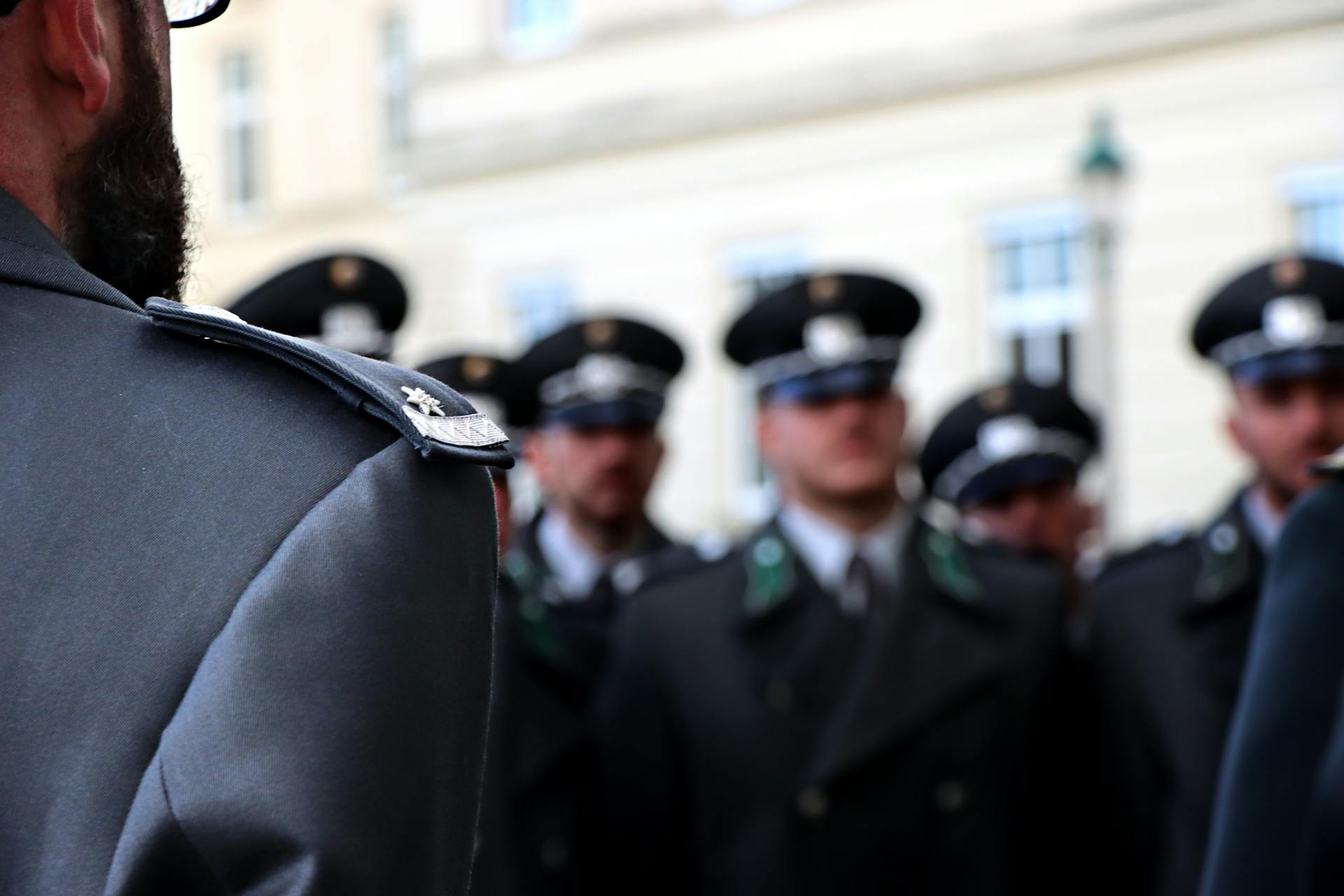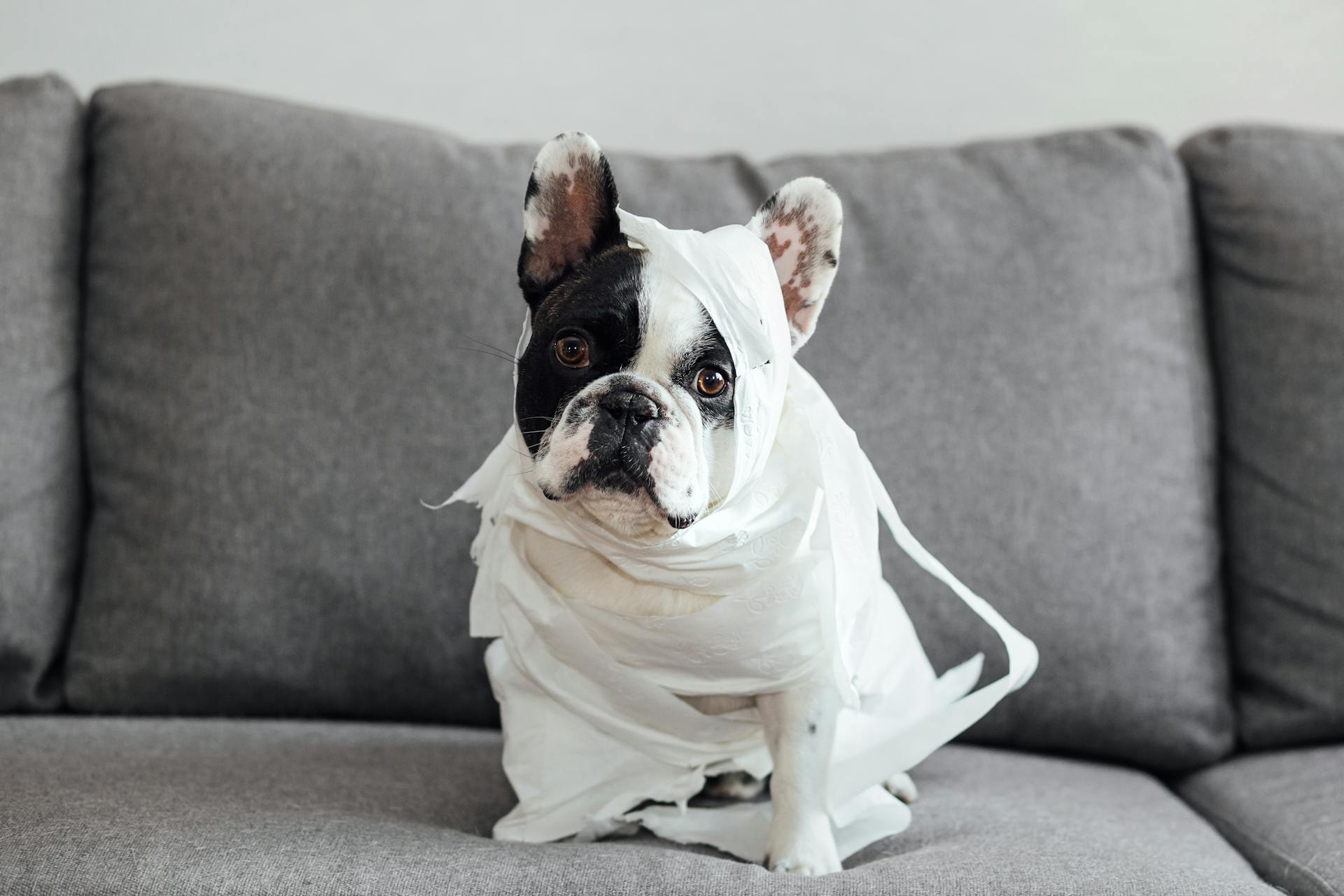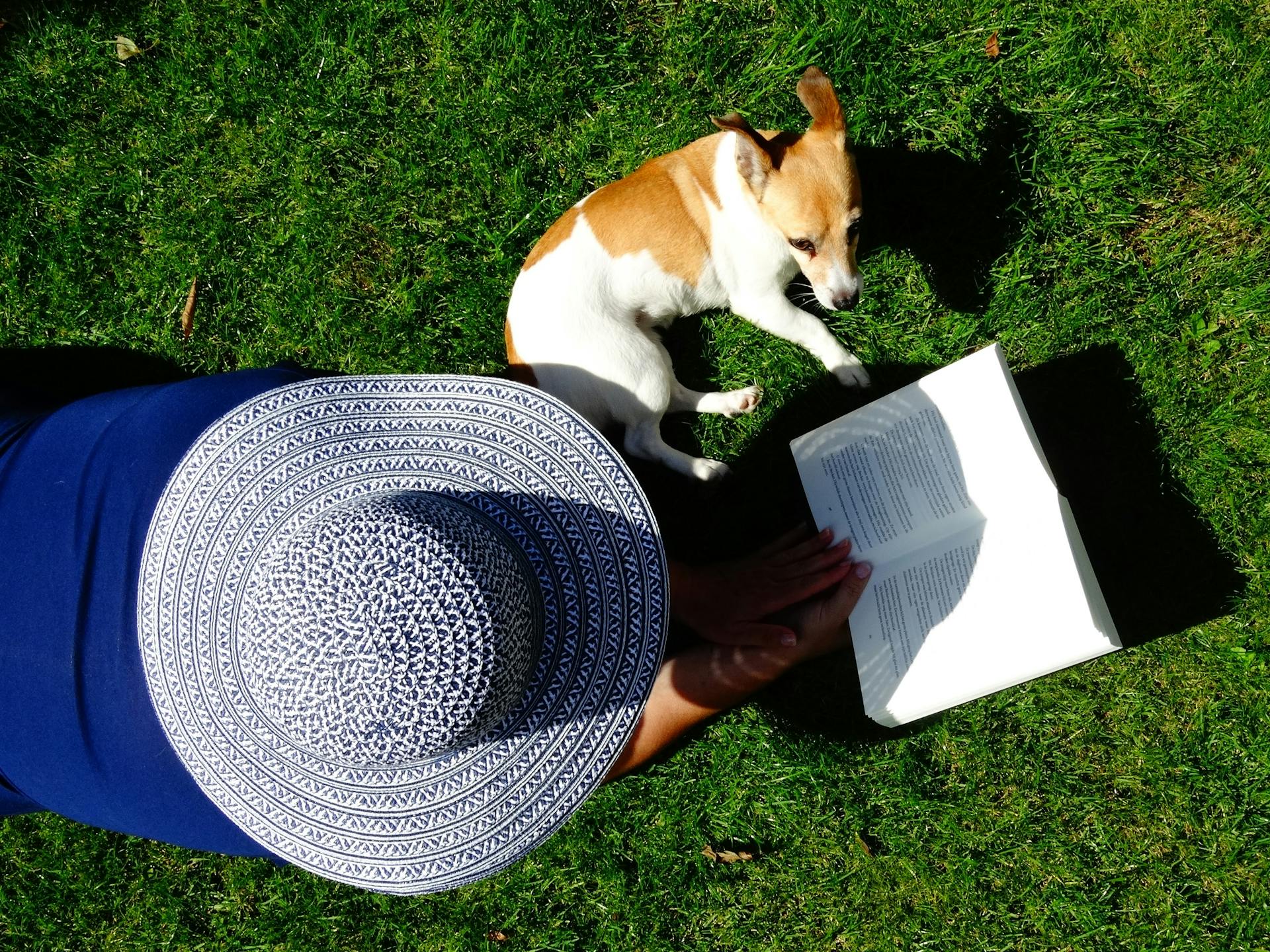
Sergeant Stubby, the brave Boston Terrier, won many awards for his heroism, including the Purple Heart and the French War Cross.
Stubby was the first dog to be promoted to sergeant in the US Army, serving in World War I.
He served in the 102nd Infantry Regiment, 26th Division, and was a beloved mascot for the troops.
Stubby's heroics earned him a special place in the hearts of his soldiers, who credited him with detecting gas attacks and locating wounded soldiers.
Stubby's Military Career
Stubby served with the 102nd Infantry Regiment in the trenches in France for 18 months.
He entered combat on February 5, 1918, at Chemin des Dames, north of Soissons, and was under constant fire, day and night for over a month.
Stubby was wounded in the foreleg by retreating Germans throwing hand grenades in April 1918.
He was sent to the rear for convalescence and, as he had done on the front, improved morale.
Stubby was injured by mustard gas in his first year of battle.
He returned with a specially designed gas mask to protect him and learned to warn his unit of mustard gas attacks.
Stubby became very adept at alerting his unit when to duck for cover, as he could hear the whine of incoming artillery shells before humans.
He was solely responsible for capturing a German spy in the Argonne, leading to their unit's commander nominating Stubby for the rank of sergeant.
Stubby was injured again, in the chest and leg by a grenade, and ultimately had two wound stripes.
He was later made a chamois coat upon which his many medals were pinned by women of the town of Château-Thierry.
Stubby's saluting trick won over the heart of his commanding officer, securing a place in the front lines as the 102nd's mascot.
He survived being wounded from exposure to mustard gas, recovering in a field hospital.
After that exposure, Stubby was able to detect even small amounts of poisonous gas.
Stubby's Legacy
Stubby received an impressive obituary in the New York Times following his death in 1926, taking up half a page – a testament to his remarkable life.
The dog's legacy extends beyond his own story, as he was the subject of a portrait by renowned artist Charles Ayer Whipple.
Stubby was featured in the Brave Beasts exhibit at the Legermuseum in Delft, The Netherlands from 2008 to 2009, showcasing his impact on a global scale.
His portrait is on display at the West Haven Military Museum in Connecticut, allowing visitors to connect with the heroic dog.
A life-size bronze statue of Stubby, named "Stubby Salutes", was dedicated by the descendants of Robert Conroy in 2018, paying tribute to fallen Connecticut veterans.
The film about Stubby's life received high marks from film critics and was endorsed by several prominent institutions, including the Humane Society of the United States.
Stubby's story was also used to teach children about World War I through the BBC Schools WWI series in 2014, demonstrating his enduring impact on education.
Curious to learn more? Check out: Cosmo Dog Real
He was honored by the Humane Society, the American Red Cross, and the American Legion upon his return to the United States in 1919, recognizing his heroism.
Stubby even received a membership card from the YMCA, promising "three bones a day and a place to sleep", a testament to his beloved status.
He led many parades and appeared in photos with several presidents, including Wilson, Harding, and Coolidge, cementing his place in American history.
A unique perspective: Real American Bully
Stubby's Life Before and After War
Stubby became a celebrity after the war, leading U.S. troops in a parade and meeting with U.S. Presidents Woodrow Wilson, Warren G. Harding, and Calvin Coolidge.
He was awarded many medals for his heroism, including a medal from the Humane Society that was presented to him by Gen. John Pershing.
Stubby spent his time congratulating and being congratulated after the armistice, traversing the streets of Paris and being recognized by hundreds of French, English, Australian and American soldiers.
On Christmas Day, he met President Wilson, and Stubby, being the friendly dog he was, offered his paw.
After the war, Stubby continued to live with Conroy while he attended law school at Georgetown University in Washington, D.C., where he became the school's mascot.
Stubby Injured
Stubby was hit by shrapnel during fighting in the Toul area when a grenade exploded. He was taken for medical care by Conroy.
Six weeks later, Stubby returned to his unit, where he belonged.
Finding Stubby
Stubby's life was about to take a dramatic turn, one that would change him forever. Corporal Robert Conroy was one of many men assigned to the 102 Infantry, training near the Yale Bowl in New Haven, Connecticut.
Conroy came upon a stray pup who kept showing up at the men's drill practices. The pup, later named Stubby, was friendly and remained a constant presence around the men while they were drilling.
Stubby's short tail or chunky body may have earned him the nickname, but it's clear he won over the hearts of the soldiers. He was a constant presence around the men, and they grew to love him.
The unit was to ship overseas from Newport News, Virginia, and Conroy knew he had to get Stubby on the ship. He hid Stubby in some of the equipment to get him to Virginia.
Postwar Life
After the war, Stubby became a celebrity and led U.S. troops in a parade.
He met with U.S. Presidents Woodrow Wilson, Warren G. Harding, and Calvin Coolidge, and was awarded many medals for his heroism.
Stubby was presented with a medal from the Humane Society by Gen. John Pershing.
He spent his time congratulating and being congratulated by hundreds of soldiers from various countries, including France, England, Australia, and the United States.
On Christmas Day, Stubby met President Wilson and offered him his paw.
Conroy, Stubby's owner, attended law school at Georgetown University in Washington, D.C., where Stubby became the school's mascot.
Stubby lived with Conroy until he passed away on March 16, 1926, at about the age of 10.
His story was memorialized in written obituaries in The New York Times and The Washington Post.
Stubby's remains were preserved and are now on display at the Smithsonian National Museum of American History.
Stubby's Unique Contributions
Stubby was the first dog to be promoted to the rank of sergeant for his heroic efforts in catching a German spy.
He caught the spy by recognizing the German didn't belong in the camp and biting his legs as he tried to escape.
Stubby's unit was under attack during a battle near Seicheprey, France, where he was wounded in his chest and leg by shrapnel.
During his recovery, Stubby visited soldiers at a Red Cross hospital to lift their spirits as a therapy dog.
The women of the town of Chateau-Thierry made Stubby a blanket and medals to thank him for his bravery after the Allies' liberation.
Frequently Asked Questions
Did Sergeant Stubby catch a German spy?
Yes, Sergeant Stubby caught a German spy, who was hiding and attempting to escape.
Sources
- https://en.wikipedia.org/wiki/Sergeant_Stubby
- https://www.britannica.com/biography/Sergeant-Stubby
- https://americanhistory.si.edu/explore/stories/stubby-dog-hoya-mascot-and-war-hero
- https://www.legion.org/magazine/226138/sgt-stubby
- https://americacomesalive.com/sergeant-stubby-1916-or-1917-march-16-1926-world-war-i-mascot/
Featured Images: pexels.com


